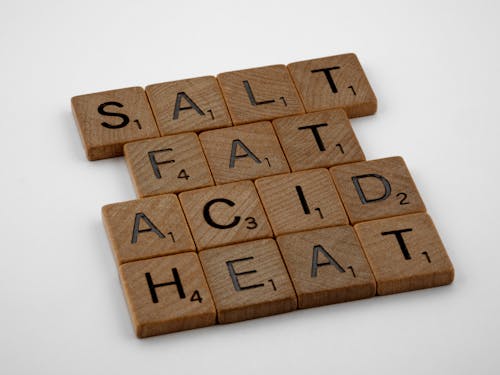Animal-derived foods such as milk and its products, meat, fish, poultry and eggs play the most important role in the human diet as they provide us with high levels of protein. Proteins not only provide the essential amino acids that make up our body's cells, but they are also important in the form of central proteins and enzymes, as well as essential life functions such as reproduction, cell growth, maturation, cell differentiation, and viruses Activities and genetic activities also act as stimulants.
amino acid
Proteins are made up of amino acids, some of which are essential. According to preliminary studies, amino acids whose absence in the diet of experimental animals used in laboratories can hinder development or cause death are called essential amino acids.
The dietary classification of amino acids is given below.
Essential Amino acids: histidine, lysine, tryptophan, phenyl alanine, methionine, threonine, leucine, isoleucine, orvalen.
Semi Essential Amino acids: arginine, tyrosine, cysteine, glycine and serine.
Non-essential amino acids: glutamic acid, aspartic acid, alanine, proline, and hydroxyproline.
Of the semi-essential amino acids, arginine and gluten are essential for chickens. Tyrosine and cysteine are partial substitutes for phenyl alanine and methionine, respectively. Siren can be a partial or complete alternative to glycine.
Protein classification:
Proteins can be grouped on the basis of whether they are derived from animals or from plants, thus they can be divided into two types of animal proteins and plant proteins.
Essential amino acids in animal proteins are higher in quantity and number than in plant proteins.
Are present and their nutritional value is also high. The rate of growth in white mice is considered a measure to determine the nutritional value and value of proteins. Over a period of time, rats that contain protein in their diet gain two to three times more weight than rats that eat plant proteins.
Two animal proteins are an exception: collagen or gelatin and elastin, both of which are found in the synthetic cells of meat.
Proteins are classified as complete and incomplete proteins based on modern knowledge of the biological differences between amino acids. Biologically complete proteins are those that contain adequate amounts of all the essential amino acids that our body needs.
We can add almost all animal proteins to the list of complete proteins. Incomplete proteins are deficient in one or more amino acids. This deficiency can be absolute or relative. Most plant proteins are considered incomplete because one or the other essential amino acid is missing.
Egg proteins are considered the standard for competing against the nutritional value of various items.
They are counteracted by the essential amino acids in eggs. Egg proteins are more digestible. In addition to the synthesis of essential amino acids in the nutritional value of proteins, other factors that are important include the free release of amino acids and the digestion of proteins. Numerous experiments have shown that animal proteins are more digestible than plant proteins.
These foods, such as milk, meat and eggs, have a high potential for amino acids.
The required amount of protein in our diet:
There is no doubt that human protein needs have been assessed based on the experiences of development and delivery in children and adolescents. The combination of plant and animal proteins can be used in the best way possible.
Certain plant proteins that are deficient in certain essential amino acids can cause problems. Human needs can be met with even less animal proteins. It is well known that animal proteins are superior to plant proteins in terms of nutritional value. Developed countries have higher levels of animal protein than developing countries and as the economic condition of the people improves, so does the consumption of animal proteins.
People in developed countries
Include more animal proteins in your diet.
Effects of protein deficiency
In many developing countries, food usually consists of grains and pulses. This includes very little food from animal sources. Animal feed is scarce in these areas. The prices of animal proteins are much higher than the purchasing power of the people.
This lack of animal proteins is spreading the symptoms of malnutrition, which is manifested in children in the form of a disease called "Kashrikar". The disease is a very complex form of malnutrition.
In malnourished areas, most babies develop satisfactorily for about 6 months. They gain weight just like any other baby because their protein needs are met by breast milk.
After 6 months of age, their protein needs increase. Firstly, due to the increase in their growth and secondly due to the rapidly growing muscles, if the growing protein requirements are not met during this time, the growth stops. If the malnutrition is more severe, the symptoms of the disease begin to appear. Modern research has shown that these conditions
8 Ways to Increase Glutathione Levels Naturally
Increasing glutathione levels naturally is essential for overall health. You can achieve this by consuming sulfur-rich foods like garlic and onions, exercising regularly, and getting adequate sleep. Avoiding excessive alcohol and reducing stress also helps. Additionally, consider taking supplements like N-acetylcysteine (NAC) and consuming foods rich in glutathione precursors, such as spinach and avocados. show Would you like to feel more energetic, live a longer life and have fewer issues with your health? It might seem too good to be true, but increasing your glutathione levels can help make these things happen. Glutathione is one of the most important molecules found in our bodies. It helps protect us from oxidative stress, toxins and viruses which could otherwise harm us. Luckily, there are several natural ways to boost your glutathione levels without taking supplements or medication - so if you're looking for a healthier way of life then read on! In this blog post we'll

Comments
Post a Comment